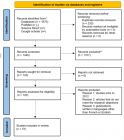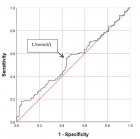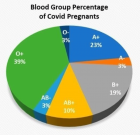Abstract
Review Article
Hyperprolactinaemia Contributes to Immunosuppressive and Corticosteroid Drug Resistance
Ian C Chikanza*
Published: 15 October, 2025 | Volume 9 - Issue 1 | Pages: 001-009
Prolactin (PRL), a hormone traditionally associated with lactation, has been increasingly recognized for its significant role in the immune system. This paper explores the multifaceted functions of PRL, particularly its contribution to immunosuppressive and corticosteroid drug unresponsiveness, commonly referred to as drug resistance. Hyperprolactinemia has been observed in various autoimmune diseases such as rheumatoid arthritis (RA), systemic lupus erythematosus (SLE), systemic sclerosis (SSc), Sjögren’s syndrome (SS), and multiple sclerosis (MS). The association between PRL and these diseases is partly explained by the proximity of the PRL gene to the HLA-DBR1 region on chromosome 6, suggesting a genetic link to autoimmune pathogenesis. Furthermore, PRL’s interaction with immune cells, including T-cells, B-cells, and macrophages, as well as its production by these cells, underscores its role in modulating immune responses. This paper hypothesizes that hyperprolactinemia contributes significantly to the resistance to immunosuppressive and corticosteroid therapy frequently observed in autoimmune diseases. The mechanisms involve PRL’s interference with corticosteroid receptor signaling pathways, STAT5 pathways, and the IL-2 receptor pathways, leading to diminished anti-inflammatory effects.
Furthermore, PRL is involved in PRL/JAK2 interactions, activation of the Ras/Raf/MAP kinase pathways, as well as the pathways involving the Src family of kinases (e.g, Fyn) and SHP2, IRS-1, and PI-3 kinase activation. In vitro and animal studies further support the immunomodulatory effects of PRL, demonstrating its ability to alter lymphocyte sensitivity to corticosteroids and immunosuppressive drugs. This comprehensive review aims to elucidate the complex interplay between PRL and the immune system, highlighting the potential for targeting PRL pathways in the treatment of autoimmune diseases and overcoming drug resistance.
Read Full Article HTML DOI: 10.29328/journal.acem.1001031 Cite this Article Read Full Article PDF
Keywords:
Prolactin; Drug resistance; Rheumatoid arthritis; SLE; Systemic sclerosis; Sjogren’s; Multiple sclerosis; Transplant rejection; Corticosteroids; Autoimmune disease; Hyperprolactinemia; STAT5; IL-2; T-cells and B-cells; IL-1β; TNF-α
References
- Goffin V, Binart N, Touraine P, Kelly PA. Prolactin: The new biology of an old hormone. Annu Rev Physiol. 2002;64:47–67. Available from: https://doi.org/10.1146/annurev.physiol.64.081501.131049
- Riddle O, Bates RW, Dykshorn SW. The preparation, identification and assay of prolactin—a hormone of the anterior pituitary. Am J Physiol. 1933;105:191–216. Available from: https://doi.org/10.1152/AJPLEGACY.1933.105.1.191
- Ormandy CJ, Camus A, Barra J, Damotte D, Lucas BK, Buteau H, et al. Null mutation of the prolactin receptor gene produces multiple reproductive defects in the mouse. Genes Dev. 1997;11:167–78. Available from: https://doi.org/10.1101/gad.11.2.167
- Binart N, Helloco C, Ormandy CJ, Barra J, Clement-Lacroix P, Baran N, et al. Rescue of preimplantatory egg development and embryo implantation in prolactin receptor-deficient mice after progesterone administration. Endocrinology. 2000;141:2691–7. Available from: https://doi.org/10.1210/endo.141.7.7568
- Matera L. Endocrine, paracrine and autocrine actions of prolactin on immune cells. Life Sci. 1996;59(8):599–614. Available from: https://doi.org/10.1016/0024-3205(96)00225-1
- Ben-Jonathan N, Mershon JL, Allen DL, Steinmetz RW. Extrapituitary prolactin: distribution, regulation, functions, and clinical aspects. Endocr Rev. 1996;17:639–69. Available from: https://doi.org/10.1210/edrv-17-6-639
- Bole-Feysot C, Goffin V, Edery M, Binart N, Kelly PA. Prolactin (PRL) and its receptor: actions, signal transduction pathways and phenotypes observed in PRL receptor knockout mice. Endocr Rev. 1998;19(3):225–68. Available from: https://doi.org/10.1210/edrv.19.3.0334
- Frantz AG. Prolactin. N Engl J Med. 1978;298:201–20. Available from: https://doi.org/10.1056/nejm197801262980408
- Vekemans M, Robyn C. The influence of exogenous oestrogens on a circadian periodicity of circulating prolactin in females. J Clin Endocrinol Metab. 1975;40:886–9. Available from: https://doi.org/10.1210/jcem-40-5-886
- Li CH, Dixon JS, Lo TB, Pankov YM, Schmidt KD. Amino acid sequence of ovine lactogenic hormone. Nature. 1969;224:695–6. Available from: https://www.periodicos.capes.gov.br/index.php/acervo/buscador.html?task=detalhes&id=W1980133027
- Nicoll CS, Mayer GL, Russell SM. Structural features of prolactins and growth hormones that can be related to their biological properties. Endocr Rev. 1986;7:169–203. Available from: https://doi.org/10.1210/edrv-7-2-169
- Human Gene Mapping 10. Tenth International Workshop on Human Gene Mapping, New Haven Conference 1989. Cytogenet Cell Genet. 1989;51:154. Available from: https://scispace.com/pdf/contents-vol-51-1989-23y2oz3wdy.pdf
- Truong AT, Duez C, Belayew A, Renard A, Pictet R, Bell GI, et al. Isolation and characterization of the human prolactin gene. EMBO J. 1984;3:429–37. Available from: https://doi.org/10.1002/j.1460-2075.1984.tb01824.x
- Sabharwal P, Glaser R, Lafuse W, Varma S, Liu Q, Arkins S, et al. Prolactin synthesized and secreted by human peripheral blood mononuclear cell and autocrine growth factor for lymphoproliferation. Proc Natl Acad Sci U S A. 1992;89:7713–6. Available from: https://doi.org/10.1073/pnas.89.16.7713
- Bewley TA, Li CH. Circular dichroism studies on human pituitary growth hormone and ovine pituitary lactogenic hormone. Biochemistry. 1972;11:884–8. Available from: https://doi.org/10.1021/bi00755a030
- Goffin V, Martial JA, Summers NL. Use of a model to understand prolactin and growth hormone specificities. Protein Eng. 1995;8:1215–23. Available from: https://doi.org/10.1093/protein/8.12.1215
- Abdel-Meguid SS, Shieh HS, Smith WW, Dayringer HE, Violand BN, Bentle LA. Three-dimensional structure of a genetically engineered variant of porcine growth hormone. Proc Natl Acad Sci U S A. 1987;84:6434–7. Available from: https://doi.org/10.1073/pnas.84.18.6434
- De Vos AM, Ultsch M, Kossiakoff AA. Human growth hormone and extracellular domain of its receptor: crystal structure of the complex. Science. 1992;255:306–12. Available from: https://doi.org/10.1126/science.1549776
- Montgomery DW, Shen GK, Ulrich ED, Steiner LL, Parrish PR, Sukosky CF. Human thymocytes express a prolactin-like messenger ribonucleic acid and synthesize bioactive prolactin-like proteins. Endocrinology. 1992;131:3019–26. Available from: https://doi.org/10.1210/endo.131.6.1446637
- Vera-Lastra O, Jara LJ, Espinoza LR. Prolactin and autoimmunity. Autoimmun Rev. 2002;1:360–4. Available from: https://doi.org/10.1016/s1568-9972(02)00081-2
- Matera L, Cutufia M, Geuna M, Contarini M, Buttiglieri S, Galin S, et al. Prolactin as an autocrine growth factor for the Jurkat human T-leukemic cell line. J Neuroimmunol. 1997;79:12–21. Available from: https://doi.org/10.1016/s0165-5728(97)00096-9
- Montgomery DW. Prolactin production by immune cells. Lupus. 2001;10:665–75. Available from: https://doi.org/10.1191/096120301717164895
- Kelly PA, Djiane J, Postel-Vinay MC, Edery M. The prolactin/growth hormone receptor family. Endocr Rev. 1991;12:235–51. Available from: https://doi.org/10.1210/edrv-12-3-235
- Goffin V, Kelly PA. Prolactin and growth hormone receptors. Clin Endocrinol (Oxf). 1996;45:247–55. Available from: https://doi.org/10.1046/j.1365-2265.1996.00799.x
- Goffin V, Kelly PA. The prolactin/growth hormone receptor family: structure/function relationships. J Mammary Gland Biol Neoplasia. 1997;2:7–17. Available from: https://doi.org/10.1023/a:1026313211704
- Goffin V, Ferrag F, Kelly PA. Molecular aspects of prolactin and growth hormone receptors. In: LeRoith D, editor. Advances in Molecular and Cellular Endocrinology. Vol. 2. Greenwich (CT): JAI Press; 1998;1–33. Available from: https://doi.org/10.1210/edrv.19.3.0334
- Bole-Feysot C, Goffin V, Edery M, Binart N, Kelly PA. Prolactin (PRL) and its receptors: actions, signal transduction pathways and phenotypes observed in PRL receptor knockout mice. Endocr Rev. 1998;19:225–68. Available from: https://doi.org/10.1210/edrv.19.3.0334
- Yu-Lee L. Stimulation of interferon regulatory factor-1 by prolactin. Lupus. 2001;10:691–9. Available from: https://doi.org/10.1191/096120301717164921
- Wells JA, De Vos AM. Hematopoietic receptor complexes. Annu Rev Biochem. 1996;65:609–34. Available from: https://doi.org/10.1146/annurev.bi.65.070196.003141
- Bazan JF. Structural design and molecular evolution of a cytokine receptor superfamily. Proc Natl Acad Sci U S A. 1990;87:6934–8. Available from: https://doi.org/10.1073/pnas.87.18.6934
- Kelly PA, Djiane J, Postel-Vinay MC, Edery M. The prolactin/growth hormone receptor family. Endocr Rev. 1991;12(3):235–251. Available from: https://doi.org/10.1210/edrv-12-3-235
- Fuh G, Wells JA. Prolactin receptor antagonists that inhibit the growth of breast cancer cell lines. J Biol Chem. 1995;270(22):13133–13137. Available from: https://doi.org/10.1074/jbc.270.22.13133
- Wilks AF, Harpur AG, Kurban RR, Ralph SJ, Zürcher G, Ziemiecki A. Two novel protein tyrosine kinases, each with a second phosphotransferase-related catalytic domain, define a new class of protein kinase. Mol Cell Biol. 1991;11(4):2057–2065. Available from: https://doi.org/10.1128/mcb.11.4.2057-2065.1991
- Ferrag F, Pezet A, Chiarenza A, Buteau H, Nelson BH, Goffin V, et al. Homodimerization of the IL-2 receptor β chain is necessary and sufficient to activate JAK2 and downstream signalling pathways. FEBS Lett. 1998;421(1):32–36. Available from: https://doi.org/10.1016/s0014-5793(97)01529-9
- Han Y, Watling D, Rogers NC, Stark GR. Jak2 and Stat5, but not Jak1 and Stat1, are required for prolactin-induced β-lactoglobulin transcription. Mol Endocrinol. 1997;11(8):1180–1188. Available from: https://doi.org/10.1210/mend.11.8.9952
- Lebrun JJ, Ali S, Ullrich A, Kelly PA. Proline-rich sequence-mediated JAK2 association to the prolactin receptor is required but not sufficient for signal transduction. J Biol Chem. 1995;270(18):10664–10670. Available from: https://doi.org/10.1074/jbc.270.18.10664
- Das R, Vonderhaar BK. Activation of raf-1, MEK, and MAP kinase in prolactin responsive mammary cells. Breast Cancer Res Treat. 1996;40(2):141–149. Available from: https://doi.org/10.1007/bf01806209
- Clevenger CV, Medaglia MV. The protein tyrosine kinase p59fyn is associated with prolactin receptor and is activated by prolactin stimulation of T-lymphocytes. Mol Endocrinol. 1994;8(6):674–681. Available from: https://doi.org/10.1210/mend.8.6.7935483
- Guyette WA, Matusik RJ, Rosen JM. Prolactin-mediated transcriptional and post-transcriptional control of casein gene expression. Cell. 1979;17(4):1013–1023. Available from: https://doi.org/10.1016/0092-8674(79)90340-4
- Yu-Lee LY, Luo G, Moutoussamy S, Finidory J. Prolactin and growth hormone signal transduction in lymphohemopoietic cells. Cell Mol Life Sci. 1998;54(10):1067–1075. Available from: https://doi.org/10.1007/s000180050235
- Leff MA, Buckley DJ, Krumenacker JS, Reed JC, Miyashita T, Buckley AR. Rapid modulation of the apoptosis regulatory genes bcl-2 and bax by prolactin in rat Nb2 lymphoma cells. Endocrinology. 1996;137(12):5456–5462. Available from: https://doi.org/10.1210/endo.137.12.8940371
- Matera L, Caseno A, Bellone G, Oberholtzer E. Modulatory effect of prolactin on the resting and mitogen-induced activity of T, B and NK lymphocytes. Brain Behav Immun. 1992;6(5):409–417. Available from: https://doi.org/10.1016/0889-1591(92)90039-q
- Mukherjee P, Mastro A, Hymer WC. Prolactin induction of interleukin-2 receptors on rat splenic lymphocytes. Endocrinology. 1990;126(1):88–94. Available from: https://doi.org/10.1210/endo-126-1-88
- Cesario TC, Yousefi S, Carandana G, Sadati N, Le J, Vaziri N. Enhanced yields of gamma interferon in prolactin treated human peripheral blood mononuclear cells. Proc Soc Exp Biol Med. 1994;205(1):89–95. Available from: https://doi.org/10.3181/00379727-205-43683
- Kumar A, Singh SM, Sodhi A. Effect of prolactin on nitric oxide and interleukin-1 production in murine peritoneal macrophages: role of Ca²⁺ and protein kinase C. Int J Immunopharmacol. 1997;19(2):129–133. Available from: https://doi.org/10.1016/s0192-0561(97)00022-2
- Hartmann DP, Holaday JW, Bernton EW. Inhibition of lymphocyte proliferation by antibodies to prolactin. FASEB J. 1989;3(10):2194–2202. Available from: https://doi.org/10.1096/fasebj.3.10.2787766
- Chikanza IC, Kozaci DL. Corticosteroid resistance in rheumatoid arthritis: molecular and cellular perspectives. Rheumatology (Oxford). 2004;43(11):1337–1345. Available from: https://doi.org/10.1093/rheumatology/keh333
- Stocklin E, Wissler M, Gouilleux F, Groner B. Functional interactions between Stat5 and the glucocorticoid receptor. Nature. 1996;383(6602):726–728. Available from: https://doi.org/10.1038/383726a0
- Wolfe AP. Transcriptional control. Sinful repression. Nature. 1997;387(6628):16–17. Available from: https://doi.org/10.1038/387016a0
- Zhang Z, Jones S, Hagood JS, Fuentes NL, Fuller GM. STAT3 acts as a co-activator of glucocorticoid receptor signalling. J Biol Chem. 1997;272(49):30607–30610. Available from: https://doi.org/10.1074/jbc.272.49.30607
- Barnes PJ, Adcork I. Anti-inflammatory actions of steroids: molecular mechanisms. Trends Pharmacol Sci. 1993;14:436–41. Available from: https://doi.org/10.1016/0165-6147(93)90184-l
- Karin M. The regulation of AP-1 activity by mitogen activated protein kinases. J Biol Chem. 1995;270(28):16483–5. Available from: https://doi.org/10.1074/jbc.270.28.16483
- Al-Sakkaf KA, Dobson PRM, Brown BL. Activation of phosphatidylinositol-3-OH kinase by prolactin in Nb2 cells. Biochem Biophys Res Commun. 1996;221:779–84. Available from: https://doi.org/10.1006/bbrc.1996.0673
- Bernton EW. Suppression of lymphocyte and adrenocortical function by corticosterone: In vivo antagonism by prolactin. Pharmacologist. 1988;30:A123.
- Chikanza IC. Prolactin and neuroimmunomodulation: In vitro and in vivo observations. Neuroendocrine Immune Basis of the Rheumatic Diseases. 1999;876:119–130. Available from: https://doi.org/10.1111/j.1749-6632.1999.tb07629.x
- Gala RR, Shevach EM. Influence of prolactin and growth hormone on the activation of dwarf mouse lymphocytes in vivo. Proc Soc Exp Biol Med. 1993;204:224–30. Available from: https://doi.org/10.3181/00379727-204-43657
- Berczi I, Nagy E, Asa SL, Kovacs K. The influence of pituitary hormones on adjuvant arthritis. Arthritis Rheum. 1984;27:682–8. Available from: https://doi.org/10.1002/art.1780270612
- Nagy E, Berczi I, Wren GE, Asa SL, Kovacs K. Immunomodulation by bromocriptine. Immunopharmacology. 1983;6:231–43. Available from: https://doi.org/10.1016/0162-3109(83)90023-1
- Nagy E, Berczi I. Prolactin and contact sensitivity. Allergy. 1981;36:429–31. Available from: https://doi.org/10.1111/j.1398-9995.1981.tb01850.x
- Berczi I, Nagy E, Kovacs K, Howarth E. Regulation of humoral immunity in rats by pituitary hormones. Acta Endocrinol. 1981;98:506–13. Available from: https://semopenalex.org/work/W2056372266
- Brennan P, Hajeer A, Ong KR, Worthington J, John S, Thomson W, et al. Allelic markers close to prolactin are associated with HLA-DRB1 susceptibility alleles among women with rheumatoid arthritis and systemic lupus erythematosus. Arthritis Rheum. 1997;40:1383–6. Available from: https://doi.org/10.1002/art.1780400804
- Vera-Lastra O, Jara LJ, Espinoza LR. Prolactin and autoimmunity. Autoimmun Rev. 2002;1:360–4. Available from: https://doi.org/10.1016/s1568-9972(02)00081-2
- Stevens A, Ray D, Alansari A, Hajeer A, Thomson W, Donn R, et al. Characterization of a prolactin gene polymorphism and its associations with systemic lupus erythematosus. Arthritis Rheum. 2001;44:2358–66. Available from: https://doi.org/10.1002/1529-0131(200110)44:10%3C2358::aid-art399%3E3.0.co;2-k
- De Bellis A, Bizzarro A, Pivonello R, Lombardi G, Bellastella A. Prolactin and autoimmunity. Pituitary. 2005;8:25–30. Available from: https://doi.org/10.1007/s11102-005-5082-5
- Chikanza IC. The neuroendocrine immunology of rheumatoid arthritis. Baillieres Clin Rheumatol. 1996;10(2):273–94.
- Chikanza IC, Panayi GS. Hypothalamic-pituitary mediated modulation of immune function: Prolactin as a neuroimmune peptide. Br J Rheumatol. 1991;30:203–7. Available from: https://doi.org/10.1093/rheumatology/30.3.203
- Chikanza IC, Petrou P, Chrousos G, Kingsley G, Panayi GS. Excessive and dysregulated secretion of prolactin in rheumatoid arthritis: Immunopathogenetic and therapeutic implications. Br J Rheumatol. 1993;32:445–8. Available from: https://doi.org/10.1093/rheumatology/32.6.445
- Chikanza IC, Chrousos G, Panayi GS. Abnormal neuroendocrine immune communications in rheumatoid arthritis. Eur J Clin Invest. 1992;22:635–7. Available from: https://doi.org/10.1111/j.1365-2362.1992.tb01422.x
- Jorgensen C, et al. Dysregulation of hypothalamo-pituitary axis in rheumatoid arthritis. J Rheumatol. 1995;22:1829–33. Available from: https://pubmed.ncbi.nlm.nih.gov/8991978/
- Ram S, Blumberg D, Newton P, Anderson NR, Gama R. Raised serum prolactin in rheumatoid arthritis: genuine or laboratory artefact? Rheumatology. 2004;43:1272–4. Available from: https://doi.org/10.1093/rheumatology/keh307
- Olsen NJ, Kovacs WJ. Hormones, pregnancy, and rheumatoid arthritis. J Gend Specif Med. 2002;5:28–37. Available from: https://pubmed.ncbi.nlm.nih.gov/12192884/
- Hampl JS, Papa DJ. Breastfeeding-related onset, flare, and relapse of rheumatoid arthritis. Nutr Rev. 2001;59:264–8. Available from: https://doi.org/10.1111/j.1753-4887.2001.tb05511.x
- Nagafuchi H, Suzuki N, Kaneko A, Asai T, Sakane T. Prolactin locally produced by synovium infiltrating T lymphocytes induces excessive synovial cell functions in patients with rheumatoid arthritis. J Rheumatol. 1999;26:1890–900. Available from: https://pubmed.ncbi.nlm.nih.gov/10493666/
- Yu-Lee LY. Prolactin modulation of immune and inflammatory responses. Recent Prog Horm Res. 2002;57:435–55. Available from: https://doi.org/10.1210/rp.57.1.435
- Leanos-Miranda A, Cardenas-Mondragon G. Serum free prolactin concentrations in patients with systemic lupus erythematosus are associated with lupus activity. Rheumatology. 2006;45:97–101. Available from: https://doi.org/10.1093/rheumatology/kei115
- Jacobi AM, Rohde W, Ventz M, Riemekasten G, Burmester GR, Hiepe F. Enhanced serum prolactin (PRL) in patients with systemic lupus erythematosus: PRL levels are related to the disease activity. Lupus. 2001;10:554–61. Available from: https://doi.org/10.1191/096120301701549688
- Buskila D, Lorber M, Neumann L, Flusser D, Shoenfeld Y. No correlation between prolactin levels and clinical activity in patients with systemic lupus erythematosus. J Rheumatol. 1996;23:629–32. Available from: https://pubmed.ncbi.nlm.nih.gov/8730116/
- Zoli A, Ferlisi EM, Pompa A, Barini A, Altomonte L, Mirone L, et al. Basal and after-stimuli test for prolactinemia in systemic lupus erythematosus. Ann N Y Acad Sci. 1999;876:155–8. Available from: https://doi.org/10.1111/j.1749-6632.1999.tb07634.x
- Jara LJ, Vera-Lastra O, Miranda JM, Alcala M, Alvarez-Nemegyei J. Prolactin in human systemic lupus erythematosus. Lupus. 2001;10:748–56. Available from: https://doi.org/10.1191/096120301717164994
- Leanos-Miranda A, Pascoe-Lira D, Chavez-Rueda KA, Blanco-Favela F. Antiprolactin autoantibodies in systemic lupus erythematosus: frequency and correlation with prolactinemia and disease activity. J Rheumatol. 2001;28:1546–53. Available from: https://pubmed.ncbi.nlm.nih.gov/11469460/
- Peeva E, Grimaldi C, Spatz L, Diamond B. Bromocriptine restores tolerance in estrogen-treated mice. J Clin Invest. 2000;106:1373–9. Available from: https://doi.org/10.1172/jci10420
- Kucharz EJ, Jarczyk R, Jonderko G, Rubisz-Brezezinska J, Brzezinska-Wcislo L. High serum level of prolactin in patients with systemic sclerosis. Clin Rheumatol. 1996;15:314. Available from: https://doi.org/10.1007/bf02229718
- Czuwara-Ladykowska J, Sicinska J, Olszewska M, Uhrynowska-Tyszkiewicz I, Rudnicka L. Prolactin synthesis by lymphocytes from patients with systemic sclerosis. Biomed Pharmacother. 2006;60:152–5. Available from: https://doi.org/10.1016/j.biopha.2006.02.007
- Haga HJ, Rygh T. The prevalence of hyperprolactinemia in patients with primary Sjogren's syndrome. J Rheumatol. 1999;26:1291–5. Available from: https://pubmed.ncbi.nlm.nih.gov/10381045/
- Kira J, Harada M, Yamaguchi Y, Shida N, Goto I. Hyperprolactinemia in multiple sclerosis. J Neurol Sci. 1991;102:61–6. Available from: https://doi.org/10.1016/0022-510x(91)90094-n
- Dijkstra CD, van der Voort ER, De Groot CJ, Huitinga I, Uitdehaag BM, Polman CH, et al. Therapeutic effect of the D2-dopamine agonist bromocriptine on acute and relapsing experimental allergic encephalomyelitis. Psychoneuroendocrinology. 1994;19:135–42. Available from: https://doi.org/10.1016/0306-4530(94)90003-5
- Bissay V, De Klippel N, Herroelen L, Schmedding E, Buisseret T, Ebinger G, et al. Bromocriptine therapy in multiple sclerosis: an open label pilot study. Clin Neuropharmacol. 1994;17:473–6. Available from: https://doi.org/10.1097/00002826-199410000-00011
- Cosson C, Myara I, Guillemain R, Amrein C, Dreyfus G, Moatti N. Serum prolactin as a rejection marker in heart transplantation. Clin Chem. 1989;35:492–3. Available from: https://pubmed.ncbi.nlm.nih.gov/2646036/
- Hiestand PC, Mekler P, Nordmann R, Grieder A, Permmongkol C. Prolactin as a modulator of lymphocyte responsiveness provides a possible mechanism of action of cyclosporin A. Proc Natl Acad Sci U S A. 1986;83:2599–603. Available from: https://doi.org/10.1073/pnas.83.8.2599
- Hiestand PC, Mekler P. Mechanism of action. Cyclosporin A and prolactin-mediated control of immunity. Proc Allergy. 1986;38:239–46. Available from: https://www.researchgate.net/publication/20140827_Mechanism_of_Action_Ciclosporin-_and_Prolactin-Mediated_Control_of_Immunity
Figures:
Similar Articles
-
Evaluation of endothelial function in obese children and adolescentsHacer Efnan Melek,Ayça Törel Ergür*,Gökçe Kaan Ataç. Evaluation of endothelial function in obese children and adolescents. . 2021 doi: 10.29328/journal.acem.1001019; 5: 014-023
-
Usefulness of salivary cortisol as a marker of secondary adrenal insufficiency in paediatric patientsLaura Capdevila,Ariadna Borràs,Eugenio Berlanga,Judith Sánchez- Manubens,Josefa Rivera,Raquel Corripio*. Usefulness of salivary cortisol as a marker of secondary adrenal insufficiency in paediatric patients. . 2021 doi: 10.29328/journal.acem.1001020; 5: 024-028
-
Metabolic syndrome: A case reportDragan Klaric,Marta Martinis*,Marta Klaric. Metabolic syndrome: A case report. . 2021 doi: 10.29328/journal.acem.1001022; 5: 031-035
-
Effective treatment of diabetes mellitus and autoimmune diseases by resonance medicinePraznikov Victor*. Effective treatment of diabetes mellitus and autoimmune diseases by resonance medicine. . 2022 doi: 10.29328/journal.acem.1001024; 6: 004-009
-
Hyperprolactinaemia Contributes to Immunosuppressive and Corticosteroid Drug ResistanceIan C Chikanza*. Hyperprolactinaemia Contributes to Immunosuppressive and Corticosteroid Drug Resistance. . 2025 doi: 10.29328/journal.acem.1001031; 9: 001-009
Recently Viewed
-
Detection of Transferrin Oxidative Modification In vitro and In vivo by Mass Spectrometry. Hereditary Hemochromatosis is a ModelMohamed Ahmed*. Detection of Transferrin Oxidative Modification In vitro and In vivo by Mass Spectrometry. Hereditary Hemochromatosis is a Model. Ann Proteom Bioinform. 2025: doi: 10.29328/journal.apb.1001025; 9: 009-019
-
A Short communication on Pichia pastoris vs. E. coli: Efficient expression systemViswanath Vittaladevaram*. A Short communication on Pichia pastoris vs. E. coli: Efficient expression system. Ann Proteom Bioinform. 2021: doi: 10.29328/journal.apb.1001016; 5: 049-050
-
A Case Report of Hepatic Rupture Associated with Hellp SyndromeSena-Martins M*,Daher PGS,Tadini V,Loprete GB,Nakata T,Mantuan L,Stefani NR,Vissechi-Filho CR,Souza GN,Sakita M. A Case Report of Hepatic Rupture Associated with Hellp Syndrome. Clin J Obstet Gynecol. 2025: doi: 10.29328/journal.cjog.1001192; 8: 077-079
-
Feasibility study on the evaluation of the effect of narrow-band CE-Chirp ASSR in the hearing field after hearing aid in hearing-impaired childrenWang Yonghua*,Xing Shuoyao. Feasibility study on the evaluation of the effect of narrow-band CE-Chirp ASSR in the hearing field after hearing aid in hearing-impaired children. Adv Treat ENT Disord. 2019: doi: 10.29328/journal.ated.1001007; 3: 007-011
-
Relationship between Vitamin D Deficiency and Lipopolysaccharides Porphyromonas gingivalis Bacteria in Stunting ChildrenErwin Gunawan*,Ria Puspitawati. Relationship between Vitamin D Deficiency and Lipopolysaccharides Porphyromonas gingivalis Bacteria in Stunting Children. Ann Biomed Sci Eng. 2024: doi: 10.29328/journal.abse.1001033; 8: 059-065
Most Viewed
-
Feasibility study of magnetic sensing for detecting single-neuron action potentialsDenis Tonini,Kai Wu,Renata Saha,Jian-Ping Wang*. Feasibility study of magnetic sensing for detecting single-neuron action potentials. Ann Biomed Sci Eng. 2022 doi: 10.29328/journal.abse.1001018; 6: 019-029
-
Evaluation of In vitro and Ex vivo Models for Studying the Effectiveness of Vaginal Drug Systems in Controlling Microbe Infections: A Systematic ReviewMohammad Hossein Karami*, Majid Abdouss*, Mandana Karami. Evaluation of In vitro and Ex vivo Models for Studying the Effectiveness of Vaginal Drug Systems in Controlling Microbe Infections: A Systematic Review. Clin J Obstet Gynecol. 2023 doi: 10.29328/journal.cjog.1001151; 6: 201-215
-
Causal Link between Human Blood Metabolites and Asthma: An Investigation Using Mendelian RandomizationYong-Qing Zhu, Xiao-Yan Meng, Jing-Hua Yang*. Causal Link between Human Blood Metabolites and Asthma: An Investigation Using Mendelian Randomization. Arch Asthma Allergy Immunol. 2023 doi: 10.29328/journal.aaai.1001032; 7: 012-022
-
An algorithm to safely manage oral food challenge in an office-based setting for children with multiple food allergiesNathalie Cottel,Aïcha Dieme,Véronique Orcel,Yannick Chantran,Mélisande Bourgoin-Heck,Jocelyne Just. An algorithm to safely manage oral food challenge in an office-based setting for children with multiple food allergies. Arch Asthma Allergy Immunol. 2021 doi: 10.29328/journal.aaai.1001027; 5: 030-037
-
Impact of Latex Sensitization on Asthma and Rhinitis Progression: A Study at Abidjan-Cocody University Hospital - Côte d’Ivoire (Progression of Asthma and Rhinitis related to Latex Sensitization)Dasse Sery Romuald*, KL Siransy, N Koffi, RO Yeboah, EK Nguessan, HA Adou, VP Goran-Kouacou, AU Assi, JY Seri, S Moussa, D Oura, CL Memel, H Koya, E Atoukoula. Impact of Latex Sensitization on Asthma and Rhinitis Progression: A Study at Abidjan-Cocody University Hospital - Côte d’Ivoire (Progression of Asthma and Rhinitis related to Latex Sensitization). Arch Asthma Allergy Immunol. 2024 doi: 10.29328/journal.aaai.1001035; 8: 007-012

If you are already a member of our network and need to keep track of any developments regarding a question you have already submitted, click "take me to my Query."














































































































































